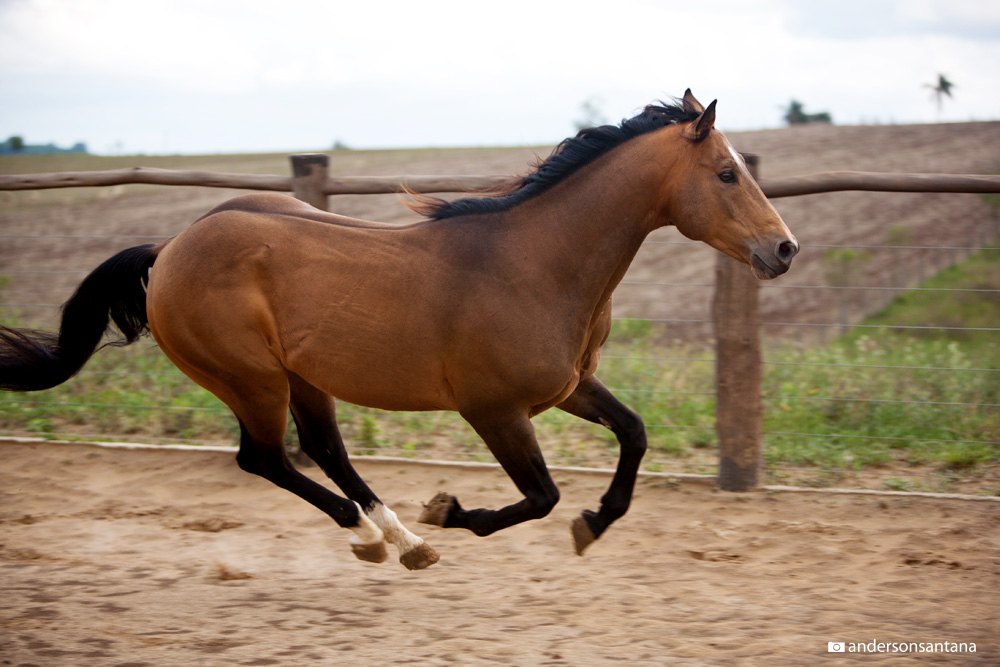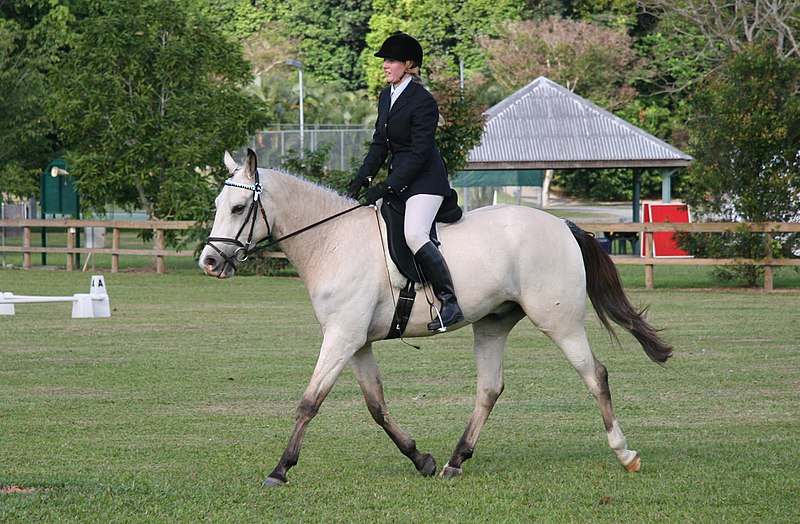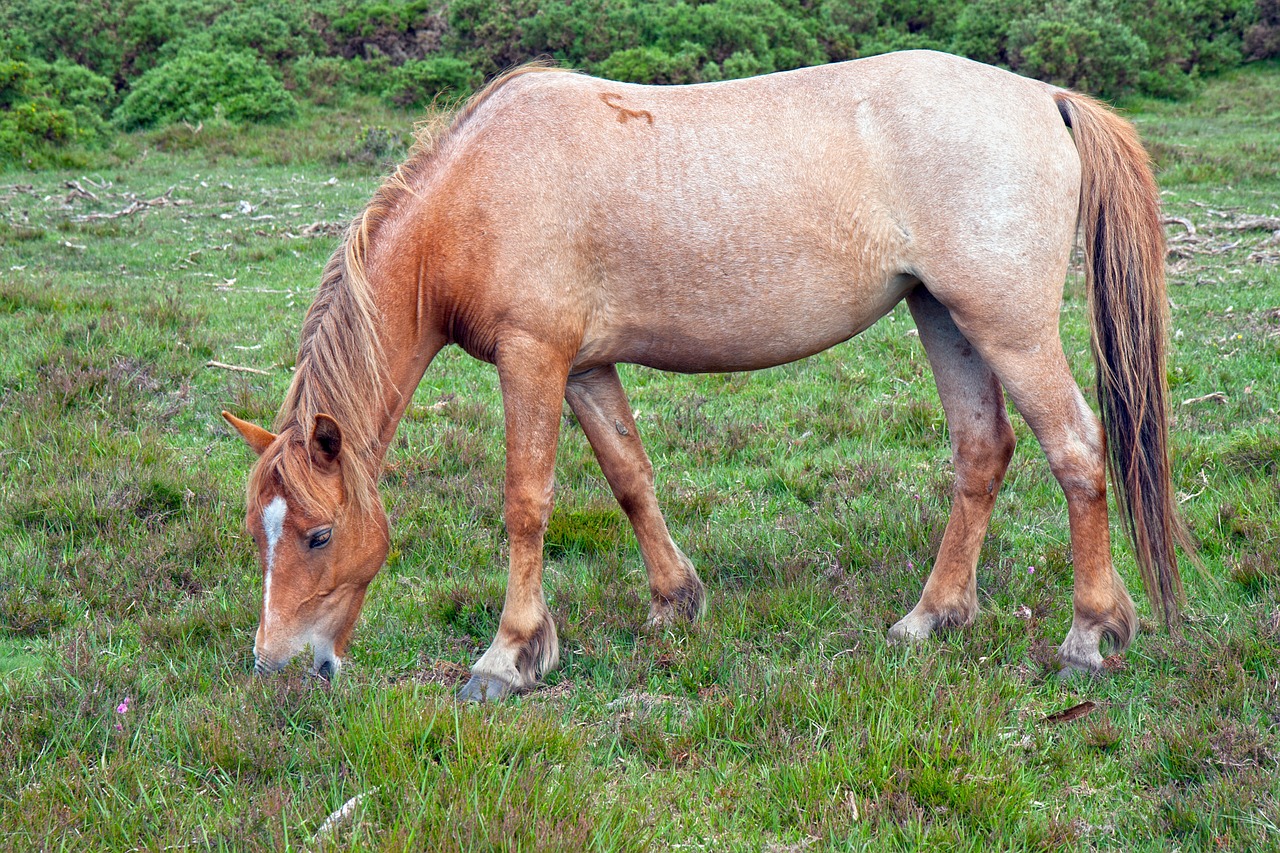Buckskin and dun-colored horses can look very similar. It’s very common for people to get the two colors confused. However, there are distinct differences, some genetic and some you can spot visually.
Buckskins have yellow colored bodies with a black mane and tail and black points, like on a bay horse. Duns range in colors from reddish to yellow to mouse grey with frost on mane and tail as well as primitive markings such as a dorsal stripe, shoulder blade stripes, webbing on their forehead, and stripes on the legs.

Table Of Contents
This is just a basic summary of the visual difference between buckskin and dun coat colors. Now let’s go more into the genetics behind these coat colors, the variations you can find in each of these colors, and other colors that can commonly be confused with dun or buckskin, and answer any questions you may have on the topic of dun and buckskin horses.

10 Genetic Facts About Buckskin & Dun Horses
- Buckskins are created through the cream gene on a bay base color. Also, the bay base is technically black with the agouti gene. The agouti gene pushes the black color to the mane, tail, and black points of the horse, leaving the bay color, which can vary in shades. This stays, and only the bay color turns to a yellow gold color.
- Duns are created with the Dun gene, which can be on any base color.
- Both the cream and dun genes dilute the color of the horse’s base coat. The cream turns the reddish color to a yellow or gold-like color. The dun just lightens the horse’s coat color and adds dun markings.
- The cream gene only affects the red base color and not the black one when one is present. When two cream genes are present red and black base colors are effected. The cream gene can lighten the skin, coat, and eyes.
- The dun gene affects both red and black-based colors.
- The dun gene commonly leaves the mane, tail, and some other areas of the body the original undiluted base coat color. Although it is also common for the mane and tail to have frosting which are light-colored hairs on either side of the mane and tail.
- Buckskin horses can also have the dun gene, they are called a dunskin. This means the horse has a base coat bay with one cream gene and one dun gene.
- Buckskin horses can have a dorsal stripe and not be dun. Dorsal striping alone does not mean the horse is dun. There are two types of non-dun horses known as non-dun 1 and non-dun 2. Non-dun 1 has no color dilution but can have primitive markings. Non-dun 2 has no color dilution and no primitive markings.
- Dun gene is a dominant gene. If one of the parents is dun then the foal will inherit the dun gene.
- Today to confirm if a horse is dun DNA testing can be done, examining the horses pedigree, and checking for the visual signs the horse is dun, such as primitive markings, dorsal stripe, and color dilution.
Buckskin Color Variations
Buckskins always have a black mane and tail, however, the shade of buckskin can vary. A dorsal stripe which is commonly seen as a dun trait can in fact still be a buckskin if it is countershading or the horse is a non-dun 1. Countershading is seen on adult horses of most colors but is more common in foals and usually fades out.
“Countershading markings that can closely resemble dun are false dorsals, shoulder bars, and stripes or mottling on the legs. A true dun dorsal will almost always be visible well into the tail while countershaded dorsals will not.”
brindlehorses.com
The different coat color variations of buckskin:
The Standard Buckskin
This is the most commonly thought of color when it comes to buckskin. The shade can vary slightly but it is most similar to the color of tanned deerskin.
Buttermilk Buckskin
Buttermilk buckskin is the lightest shade of buckskin, a very light creamy yellow color, which really contrasts against the black mane, tail and black points.
Golden Buckskin
The golden buckskin looks similar to the standard buckskin but is slightly darker in the neck and shoulder and back areas.

Sooty Buckskin
Sooty Buckskin looks as if soot was dumped on top of the horse. The top of the coat is darker while the bottom of the coat is lighter giving it the look. The coat is not as diluted as the other buckskin variations.
Silver Buckskin
I have seen two examples of a silver buckskin. The true silver buckskin is a bay horse with the cream gene and the silver dapple gene. The horse’s body has the gold yellow body with a white or silver looking mane and tail. Check out a photo of this Silver Buckskin Tennessee Walking Horse.
Then there is the silver buckskin that has a black mane and tail black points and the coloring of their coat is anywhere from a very light buckskin with silverish tint to much more prominent silver coloring. These are not true silver buckskins because they don’t have the silver dapple gene.
Other Buckskin Variations
There are other buckskin variations with buckskin as a base with another gene. The silver buckskin with the silver dapple gene for example.
Other variations with buckskin as a base coat include:
- Dunskin
- Buckskin Tobiano
- Buckskin Overo
- Buckskin Tovero
- Buckskin Roan
- Dunskin Roan
Dun Color Variations
The most common dun coat color looks like a buckskin horse, which is why so many people confuse buckskin with dun or vice versa. A dun horse can come in several different colors and have certain characteristics known as primitive markings.
Dun Horse Primitive Markings
Dorsal Stripe
A dorsal stripe is a darker colored line that runs through the horses mane, down the back, through the tail. The stripe does not fade away. The color of the dorsal stripe is of the horse’s base coat, but on a bay it can be black or reddish. That’s because the bay color is originally black with the agouti gene.
Dark Face
Sometimes on a dun, the face will be darker which is sometimes called a face mask. Subtle stripes on the horse’s forehead are also common, similar to a tiger or brindle but more faint is called cobwebbing.
Leg Stripes
These are horizontal stripes on the horse’s legs that are usually faint. These are usually found on the back of the forelegs, above the knees and hocks as well. They are also sometimes called zebra bars.

Shoulder Stripe
Known as the transverse stripe. This is another trait sometimes found in dun horses and also donkeys. The shoulder stripe is near the horse’s withers and is a line perpendicular to the dorsal stripe. Looking at it from an aerial view, it would almost look like a cross.
Mane And Tail Frosting
This is the hairs on the edges on both sides of the tail and mane. The color is lighter making it look frosted. It can be just a little bit and not really noticeable or a lot of frost and very noticeable.

Dark Ears Tips
The tip or rim of the ears are often darker and similar in color to the horse’s dorsal stripe.
Red Dun
Red dun is with base coat chestnut or red. The coat is much lighter than the normal chestnut colors. The color almost looks like a chestnut coat that has a full body clip. The dorsal stripe is usually a brighter chestnut.
Black Dun
Black dun is more commonly known as grulla or grullo. The dun gene lightens the black to an almost blue or steel grey. The face usually has a dark mask along with the other dun characteristics.
Bay Dun
Bay dun is the color commonly confused with buckskin horses. It is a yellowish color. The Dun gene lightens the bay color and turns the red more yellow. There are varying degrees depending on the horse. Some look slightly more reddish bay and some more yellow.

Buckskin Dun
A buckskin dun is known as a dunskin. The buckskin has the yellow buckskin coat and the black mane usually with some frost on the mane and tail. Then the other dun characteristics.
Palomino Dun
A palomino dun is known as a dunalino. The palomino has the golden coat with the platinum blonde almost white mane and then the characteristics of the dun.
Colors Commonly Confused With Buckskin And Dun
Buckskin & Duns Get Confused
Buckskins are often confused with duns and vice versa.
Palomino
Buckskins have been confused with palominos.
Perlino
Red Duns have been confused with Perlinos.

Red Roan
Red duns get confused with red roan.

Dark Greys & Blue Roans
Grulla Dun gets confused with blue roans and dark grey horses.
FAQ’s About Dun And Buckskin Horses
Buckskin is a color not a breed. However there are registries for buckskin colored horses. A couple of these would be the International Buckskin Horse Association and the American Buckskin Registry Association Inc.
A buckskin can be found among many breeds. The buckskin color comes from a bay horse with one cream gene.
Buckskin horses have a coat that ranges in shades from a light creamy yellow to gold to dark gold. They have black points, as well as black mane and tail, the same as a bay horse because buckskins come from the base coat bay.
Buckskins are not as common as bay horses but they are also not considered rare. There are many buckskins produced in different breeds of horses.
A dun horse is a horse with the dun gene that causes a lightening of the base coat of any color and creates markings such as leg striping, dorsal stripe from mane to tail, mane and tail stay darker with frosted hairs on the sides, dark tips on the ears, darkened face, faint stripes on forehead and shoulder stripe.
All duns have a dorsal stripe that goes through the mane over the horse’s spine and into the tail. They would also have other primitive markings.
Yes if the horse is a non-dun type 1 a horse can have a dorsal stripe but it does not go into the coloring of the tail and the horse would have no primitive markings. Also, a buckskin can have dun genetics and if so would be considered a dunskin.
A red dun horse is a horse with a chestnut base and the dun gene. The mane and tail and some of the face typically stay the base chestnut color while the body is a much lighter color. The color looks like a chestnut horse that has a full body clip.
A grulla horse is a black dun. The base coat is black with a dun gene. The horse has a darker face, mane, tail and lower legs, along with the dun markings. Their body looks like a mouse grey all the way to a steely grey.
A dun horse can turn grey if the horse has a parent with the grey gene and they inherited it. However, dun horses do not lighten in color as they age, as grey horses do.
Wrapping Up
So now go forth and practice your ability to determine whether a horse is dun or buckskin.
Comment below if you have any questions about dun or buckskin horses that have not been answered.
If you would like to learn more about horse colors I have 2 blog posts you may like to check out.
27 Fun Facts About Palomino Horses and Horse Coat Color Picture Guide (FAQS Included)
Cheers, Kacey
Related Blog Posts
- Complete Guide To Horse Coat Colors & Patterns: FAQ’s Included
- Bay Horses 101: Learn All About The Beautiful Shades Of Bay
- 16 Dapple Grey Horse Facts With Beautiful Pictures | Breeds List | Resources
- What Is A Flea Bitten Grey Horse? Grey Horse Breeds, Facts, Colors & Photos
- 27 Interesting Palomino Horse Facts With Beautiful Pictures & Some Extras
- All About Blue Roan Horses (Genetics, Facts, Breeds & More!)
- Horse Face and Leg Markings Chart
- Horse Coat Patterns for the American Paint Horse

